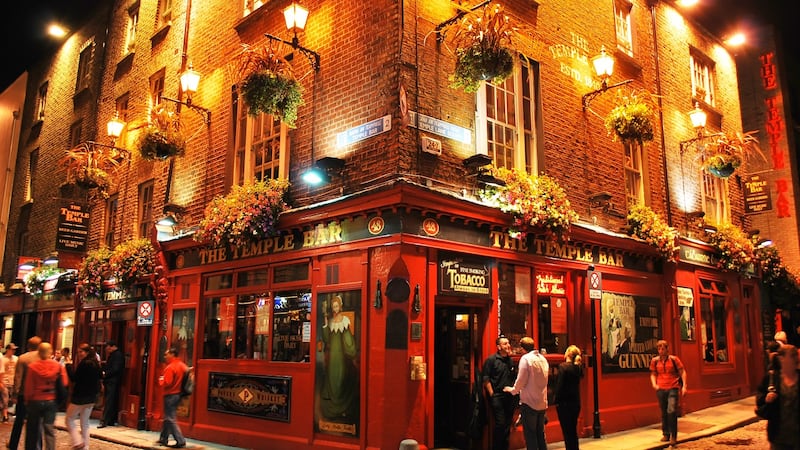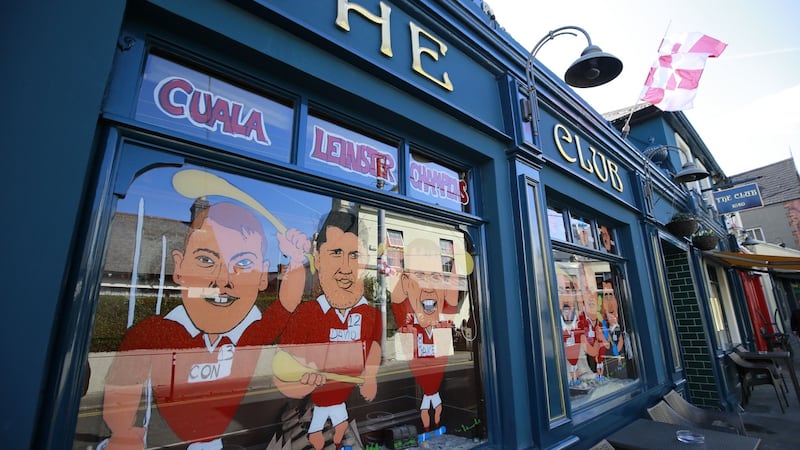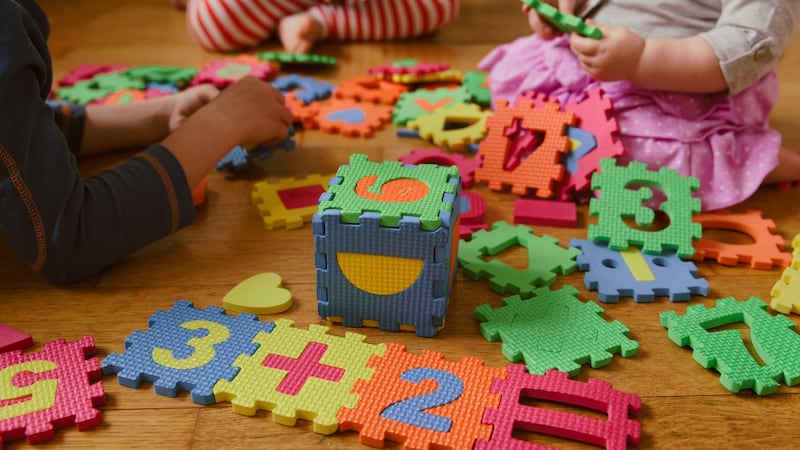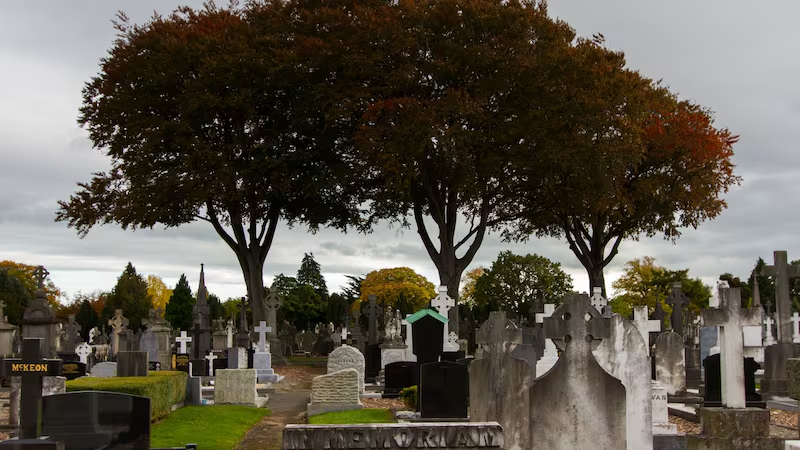Dublin’s north/south divide may be the subject of regular caricature on screen and on the page with the likes of Ross O’Carroll-Kelly and Damo & Ivor. The reality, clearly, is very different. However, while the cultural/class element might have been overplayed, is there in fact a financial divide? And could you be paying a premium to live on your chosen side of the city?
We’ve taken a look at some of the common expenses faced by families and drawn some conclusions. It should be noted that this is a newspaper article, and not an exhaustive research exercise. But the conclusions are convincing nonetheless.
A family with three children could be paying a premium of almost €300,000 to live on one side of the city over the other when you factor in four years of childcare, private school, and the difference in house prices. So could it be time to move?
Here’s what we’ve found is the most expensive side of the city.
House prices
It’s the biggest expense for most people – and can be far greater depending on where you choose to live. Indeed, as our survey shows, if you choose to live south of the Liffey, or work/school dictates that you do, you will likely end up paying significantly more for your accommodation.
The most expensive house prices in the whole State are found near the sea on the southside, with a median house price of €520,000 reported for Dún Laoghaire for 2017 (the most recent year available). This is 66 per cent more expensive than Fingal on the other side of the city.
There are, of course, cheaper places to live on the southside; the median house price in South Dublin, which encompasses areas including Clondalkin, Rathcoole and Templeogue, for instance, was €320,000 in 2017.
If you opt to live on the southside over the north, you could end up spending €200,000 more on your house
And the differential exists across the other locations we’ve examined in the survey. Residents of Dublin 1, for example, on Dublin’s northside docklands, paid a median property price of €250,000 in 2017 – 30 per cent less than those on the opposite side of the river in Dublin 2.
The difference is even greater when we compare the Dublin 3 postcode (which includes Clontarf and Fairview) with Dublin 6 (Ranelagh, Rathmines). On the northside, the median price for this area stood at €366,000 in 2017 compared with €567,000 on the southside, almost 36 per cent more.
So, if you opt to live on the southside over the north, you could end up spending €200,000 more on your house: Consider all the holidays and home improvements – or financial wriggle room to over-pay the mortgage – that could be done with that amount of money.
Rents
But what if you’ve chosen to rent, rather than buy a home? The Residential Tenancies Board’s rent index doesn’t give a break-down on rents in different parts of the city, so we’ll consider instead the Daft.ie rent report.
This is based on asking – rather than agreed – rents, so there may be an element of overstatement. Nonetheless, the findings show a clear premium for southside properties – even when it’s just a matter of being located on one side of the Liffey over the other.
For example, if you want to rent a two-bed property in Dublin’s city centre, you will pay about €1,923 for a property in Dublin 1 along the docks. Cross over the Samuel Beckett bridge and move closer to Grand Canal Dock and you’ll pay a premium of more than 12 per cent. Living on the southside, which may mean just the span of a bridge, will cost you €270 more a month, or €3,240 a year, or €16,200 over five.
You'll pay 10 per cent more every month for your southside property
And what happens if you shift yourself to the suburbs? Well, let’s compare Ranelagh on the southside and Clontarf on the northside, two similar “bouji” suburbs of Dublin. In the former, you can expect to pay about €2,386 a month for a three-bed property: it’s €2,129 on the other side of the city.
This means that you’ll pay 10 per cent more every month for your southside property.
But the big difference really appears the further out you go; consider a three-bed home in north county Dublin, encompassing areas like Malahide and Swords. You can expect to pay about €1,410 a month here for a property. But if you wanted to live a similar distance from the city centre on the southside, you’ll be paying an enormous premium. In south county Dublin, home to places like Sandycove, Blackrock and Dún Laoghaire, you’ll be paying top dollar for your rental property, despite a distance from the city centre.
Average three-bed rents here are €2,188, a differential of some 36 per cent – or €787 every month. That’s almost €10,000 every year.
Cost of living
While the major expenses, such as the weekly shop and electricity/ gas etc, should be the same on both sides of the city, when you look at more specific expenses, such as take-aways, you can see a difference.
Fast food chain Borza’s, for example, has a price of €8.20 for a quarter pounder meal at its outlet in Stepaside; move across the city to Swords, and you’ll pay only €7.20.
The most expensive area is Dublin 2, where the average price of a pint is €5.41. The cheapest is also on the southside, in Dublin 12, where the average is just €4.48
Or how about the price of a pint? According to the Guindex, which tracks the cost of a pint of plain around Ireland, the most expensive area in Dublin is Dublin 2, where the average price is €5.41. Interestingly, the cheapest is also on the southside, in Dublin 12, where the average is just €4.48.
If you want to look at specific pubs, you could look at the famed Gravediggers pub in Glasnevin, where you’ll pay €4.60 for your pint according to the index. You could spend 15 per cent more, €5.30, in Slattery’s in Beggars Bush on the southside.
The most expensive pint in the survey is also to be found on the southside, in The Temple Bar, at €6.90.


Or what about a family membership to a GAA club? On Dublin’s northside, Na Fianna has an annual fee of €360, while Cuala’s annual sub in Dalkey is €415.
When it comes to fuel, the southside is a rare winner in our survey. When we found the cheapest price for a litre of petrol on the southside on pumps.ie, it actually turned out to be cheaper than that available on the northside.
Applegreen on the N11 had a litre of petrol for 121.5c at the time we checked compared with 125.8c at the same petrol distributor on the Malahide Road at the same time.
Sporting events too, can be cheaper. A 10-year premium ticket to Croke Park for example, costs €13,500 but the Football Association of Ireland is now selling equivalent tickets to the Aviva for about €5,000. Rugby tickets, however, may be substantially more expensive, given that there are currently none available, with the application process re-opening only in 2020.
And golf? Not so different, it seems.
You can now join Portmarnock Golf Links for an annual fee of €2,500 – with no joining fee. The Island has an annual fee of €1,570 plus a joining fee of €10,000.
On the southside, you can join Foxrock Golf Club for an annual fee of €1,494 plus a joining fee of €12,000 or Dún Laoghaire Golf Club for an annual fee of €2,410 and no joining fee.
Education
Paying for a private education probably won’t cost you more or less depending on which side of the city you live on; but if you live on the southside, you might be more inclined to send your children to a fee-paying school.
Sutton Park on Dublin’s northside, for example, is one of the State’s most expensive, with annual fees of about €7,900, while Castleknock College is about the same as Holy Child or Gonzaga on the southside.
There are about 33 private post-primary schools in Dublin. Just four are on the northside
But, given that there are far more private schools on the southside, it means that a private education may be seen as more of a norm than it is on the northside.
According to the Department of Finance, for example, there are about 33 private post-primary schools in Dublin. Of these, just four (Sutton Park, Belvedere, Castleknock College and Mount Sackville) are on the northside.
If you factor in transition year, attending a private secondary school is likely to cost between €27,000-€40,000 per child. For a family of three, the expense could be as much – if not more – than €100,000.
Childcare
Like with house prices, Dún Laoghaire-Rathdown has the most expensive childcare costs. According to figures for 2017/18 compiled by Pobal, the average weekly fee for full-time childcare was €233.26. That was €55.34, or 31 per cent, above the national average. The most expensive rate in the area was €308, with a lowest rate of €150 also reported.

Across the city, in Fingal, the average weekly fee, per child, for full day care was €206.26 – or 14 per cent cheaper than the equivalent on the southside. Based on a 50-week year, this means that childcare could cost a parent on the southside about €1,350 more a year.
Death
Even getting buried can be more expensive on the southside. The cost of a plot at cemeteries operated by Glasnevin Trust, which includes Glasnevin, Palmerstown, Dardistown and Newlands Cross, is €2,100. Nearby, Fingal County Council operates 36 cemeteries, with prices at €1,400 for a plot.

On the southside, prices differ, ranging from the not insignificant €16,000 at the almost-full Deansgrange, to €2,900 at Shanganagh, or €2,400 at cemeteries including Saggart and Newcastle.












